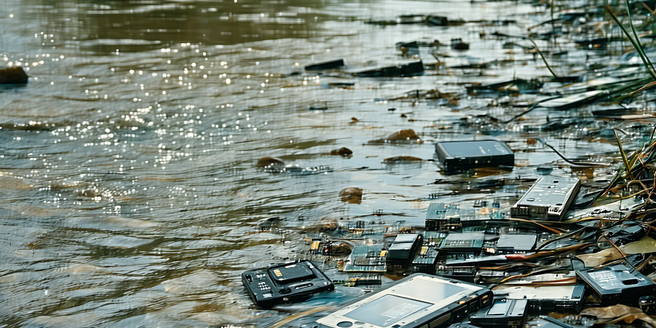E-waste Solutions: Responsible Mobile Disposal

Understanding the Impact of E-Waste on the Environment
E-waste, or electronic waste, consists of discarded electronic devices, which can cause significant environmental harm. These devices often contain hazardous substances, including lead, mercury, and cadmium, which can leach into soil and water, risking ecosystem disruption and health issues for humans. E-waste recycling is complicated and costly, leading to improper disposal. With rapid technological advancements, the turnover of electronic gadgets is high, further exacerbating the e-waste crisis. Moreover, not all e-waste is processed properly, resulting in valuable materials being wasted instead of recovered and reused. Effective management and global cooperation are essential to address the e-waste challenge, reduce its environmental impact, and reclaim valuable materials.
Why Mobile Devices Contribute Heavily to E-Waste
Mobile devices contribute heavily to e-waste due to their high consumption rates and short lifecycle. With frequent upgrades and the constant release of new models, people often discard their old phones without proper recycling. These devices contain numerous hazardous materials like lithium, cobalt, and rare earth elements, which can harm the environment if they are improperly disposed of. Additionally, mobile phones are often thrown away with their batteries intact, posing a fire risk if compacted in landfills. The sheer volume of phones produced and disposed of each year creates a significant environmental burden. Promoting awareness and improving recycling infrastructure is crucial to mitigating the impact of mobile-based e-waste on the planet.
Effective Strategies for Recycling Old Mobile Phones
Recycling old mobile phones is crucial for minimizing e-waste. The first step is to ensure proper collection through designated take-back programs organized by manufacturers and local authorities. Encouraging mobile phone donation or trade-in options can extend device life or facilitate component recovery. Raising awareness about the simplicity of recycling phones through various drop-off locations or mail-in services can improve recycling rates. Utilizing certified e-waste recyclers ensures that hazardous materials are handled responsibly and valuable materials are recovered for reuse. Community initiatives and educational campaigns play a vital role in engaging consumers and demystifying the recycling process, addressing the environmental impact of improper disposal.
Innovative Technologies in Mobile E-Waste Management
Innovative technologies in mobile e-waste management are crucial for sustainable development. One approach involves advanced material recovery systems that use artificial intelligence to sort and process components more efficiently. These systems increase the yield of valuable materials like gold, copper, and palladium, while reducing contamination. Another promising innovation is environmentally-friendly extraction techniques that minimize the use of toxic chemicals in recycling processes. Additionally, initiatives such as modular phone designs aim to reduce e-waste by allowing consumers to easily upgrade parts rather than replacing the entire phone. These technologies enhance the rate of recycling and promote a closed-loop system, significantly reducing the need for raw material extraction.
Consumer Responsibility and Awareness in Mobile Disposal
Consumer responsibility is central to sustainable mobile disposal. Users need education on the importance of recycling and the environmental impact of improper mobile phone disposal. Awareness campaigns can inform consumers of available recycling options, such as manufacturer take-back programs or local drop-off points. Additionally, advocating for longer product lifespans and responsible consumption can help reduce e-waste. Incentivizing recycling through financial discounts or trade-in programs can motivate consumers to dispose of their devices responsibly. Emphasizing the impact of individual actions on a larger scale helps build a culture of environmental stewardship and encourages more responsible consumer behavior.
Policy and Regulation: Supporting Sustainable Practices
Policy and regulation play a crucial role in supporting sustainable e-waste practices. Strong legislative frameworks can enforce manufacturer responsibility in designing sustainable electronics and managing end-of-life disposal. Implementing stringent e-waste recycling laws ensures that electronic components are processed correctly, minimizing hazardous waste and environmental impact. Initiatives like extended producer responsibility (EPR) can mandate companies to take back old devices, promoting recycling and material recovery. Furthermore, international cooperation on e-waste policies can facilitate sharing best practices and technologies. Policymakers must continually adapt to technological advancements and increase public awareness to address the growing e-waste challenge effectively.